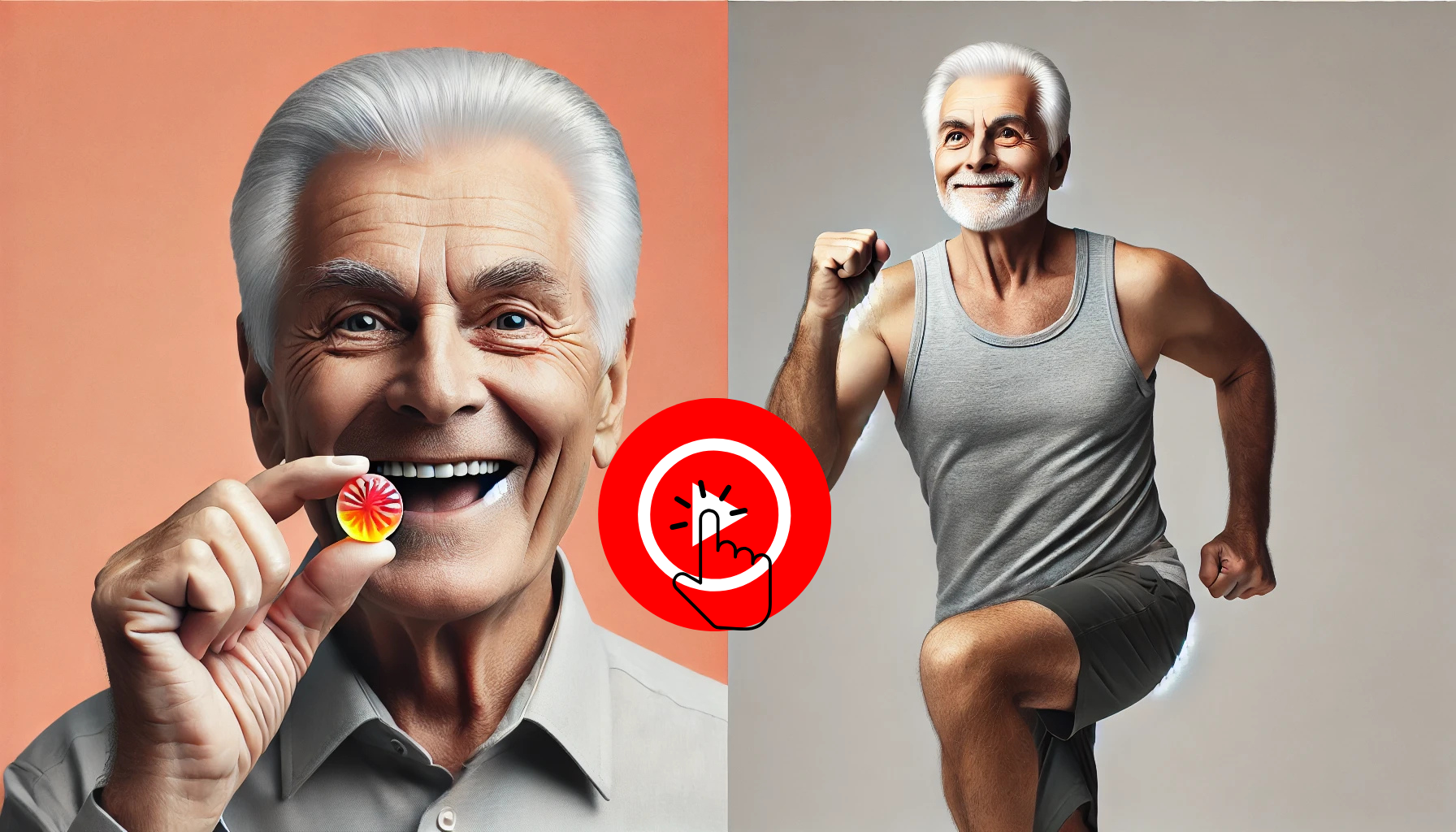understanding the cause of joint aches for seniors
Explore the root causes of joint aches and discover natural remedies tailored for seniors looking for relief.
If you are tired of struggling with chronic joint pain and long for the chance to move freely again, now is the time to take action. Imagine waking up each day without the burden of discomfort, ready to enjoy life to the fullest. We understand how challenging it can be, but there is hope. Click the button below to watch a transformative video that has empowered thousands of seniors just like you to reclaim their mobility and embrace a pain-free life. This could be the moment that changes everything for you. Don’t wait; your journey to relief starts today!
As we age, many of us face the unwelcome companion of joint aches. For seniors, these aches can translate into daily struggles, affecting mobility and the enjoyment of life. Understanding the underlying causes of joint pain, particularly in the knees, becomes crucial. This article aims to unravel the complexities surrounding joint discomfort, exploring both the physiological changes the body undergoes and the emotional repercussions of living with chronic pain. By delving into natural remedies that effectively alleviate these issues, we hope to guide readers towards solutions that lead to pain-free living and renewed joy.
why do joint aches increase with age?

As people age, it is common to experience joint aches more frequently. This can be due to various factors that affect the body over time. One of the main reasons is the natural wear and tear on the joints. The cartilage that cushions the joints can wear down, leading to pain and stiffness.
Natural Wear and Tear
The cartilage is a smooth tissue at the ends of bones that helps reduce friction. As we age, this cartilage can degrade, causing bones to rub against each other. This can lead to pain, swelling, and further damage to the joint.
Changes in Muscle Strength
With age, people may notice a decline in muscle strength. Strong muscles support and protect the joints. When muscles weaken, they cannot support the joints effectively, which can result in increased pain and discomfort.
Health Conditions
Many older adults develop conditions like arthritis. Arthritis causes inflammation in the joints, leading to increased pain. It is important to recognize these conditions early to start appropriate treatment.
Lifestyle Factors
Inactive lifestyles can contribute to joint stiffness. Regular exercise is essential to maintain joint flexibility and strength. Engaging in gentle activities can help reduce pain and improve movement.
Importance of Regular Check-ups
It is crucial for seniors to have regular health check-ups. This ensures any underlying health conditions are identified and managed promptly. Discussing joint pain with healthcare providers can lead to helpful treatments and lifestyle adjustments.
the impact of arthritis on knee joints

Arthritis can have a significant impact on knee joints. It causes pain, swelling, and stiffness, making everyday activities challenging. Understanding how arthritis affects the knees can help individuals manage their symptoms better.
Types of Arthritis
There are different types of arthritis that can affect the knees, with osteoarthritis and rheumatoid arthritis being the most common. Osteoarthritis involves the wear and tear of cartilage, while rheumatoid arthritis is an autoimmune condition that causes inflammation in the joints.
Symptoms of Knee Arthritis
Common symptoms include persistent pain, joint swelling, and reduced range of motion. People may find it hard to bend or straighten their knees. These symptoms can worsen over time, especially with activity.
Impact on Mobility
Arthritis can limit mobility. Individuals may feel pain during simple actions like walking, climbing stairs, or even standing. This limitation can affect daily life and reduce physical activity.
Treatment Options
There are many treatment options available. Physical therapy can help strengthen the muscles around the joint, providing better support. Medications such as pain relievers and anti-inflammatories may also be prescribed. In severe cases, surgery may be necessary to relieve pain.
Importance of Healthy Lifestyle
Maintaining a healthy weight is essential for those with knee arthritis. Excess weight increases stress on the joints. Engaging in low-impact exercises, like swimming or cycling, can improve joint function without putting strain on the knees.
understanding cartilage damage and inflammation

Cartilage damage and inflammation are critical factors in joint pain. Cartilage is a smooth tissue that cushions the ends of bones at a joint. When this tissue is damaged, it can lead to pain and decreased mobility.
What is Cartilage Damage?
Cartilage damage occurs when the cartilage wears away due to various reasons. This can be a result of aging, sports injuries, or diseases like arthritis. When cartilage is damaged, it provides less support and cushioning for the joint, leading to pain.
Causes of Inflammation
Inflammation in the joints can occur from injury or disease. It is the body’s way of protecting itself. However, when inflammation becomes chronic, it can lead to severe pain and further damage. Conditions such as rheumatoid arthritis cause the body’s immune system to attack healthy cartilage.
Symptoms of Cartilage Damage
Common symptoms include swelling, pain during movement, and stiffness. People with cartilage damage may experience the joint locking or giving way due to the lack of support that healthy cartilage provides.
Diagnosis and Treatment
A doctor can diagnose cartilage damage through imaging tests like X-rays or MRIs. Treatment options often include physical therapy to strengthen the surrounding muscles, medications to reduce inflammation, and lifestyle changes to manage symptoms.
Preventing Further Damage
Maintaining a healthy weight is crucial in preventing further cartilage damage. Weight can put extra stress on the joints. Regular, low-impact exercise can also help keep joints flexible and strong.
effective natural remedies for joint pain relief

Natural remedies can be an effective way to relieve joint pain. These remedies may help reduce inflammation and improve mobility without the side effects associated with some medications.
Turmeric
Turmeric contains curcumin, a compound known for its anti-inflammatory properties. It can be consumed as a spice in food or taken as a supplement. Regular use may help decrease joint pain and swelling.
Ginger
Ginger is another powerful anti-inflammatory herb. Drinking ginger tea or adding fresh ginger to meals can provide relief from joint stiffness and discomfort. Its natural compounds help reduce inflammation and can improve joint function.
Boswellia Extract
Boswellia, or frankincense, is known for its pain-relieving effects. This herbal extract can be found in supplement form. Studies have shown that boswellia can help alleviate joint pain and increase mobility.
Omega-3 Fatty Acids
Foods rich in omega-3 fatty acids, such as fish, walnuts, and flaxseeds, can help reduce inflammation. These healthy fats support joint health and can be included in a balanced diet to promote overall well-being.
Hot and Cold Therapy
Applying heat or cold to affected joints can provide immediate relief. Heat helps to relax muscles and improve circulation, while cold can reduce swelling and numb sharp pain. Alternating between both can be beneficial for managing discomfort.
the role of boswellia and hemp in pain management

Boswellia and hemp are two natural remedies known for their pain-relieving properties. Both have gained popularity as alternative treatments for joint pain and inflammation.
Boswellia
Boswellia, often referred to as frankincense, comes from the resin of the Boswellia tree. It is rich in boswellic acids, which have strong anti-inflammatory effects. Studies show that boswellia can reduce pain and improve mobility in individuals with arthritis. It works by inhibiting the production of inflammatory enzymes in the body.
How to Use Boswellia
Boswellia is available in supplement form, including capsules and extracts. It can also be found in topical creams. Regular use can lead to significant reductions in joint pain and better overall joint function.
Hemp
Hemp, particularly hemp oil and CBD (cannabidiol), has become popular for managing pain. It interacts with the body’s endocannabinoid system, which plays a role in regulating pain and inflammation. Many people report relief from chronic pain, including joint aches, when using hemp products.
How to Use Hemp
Hemp oil can be taken orally or applied topically. CBD balms and tinctures are widely available and can provide localized relief. It’s important to start with a small dose and adjust based on individual needs.
Combining Boswellia and Hemp
Some individuals find that combining boswellia and hemp enhances their pain management. Using both can provide a more comprehensive approach to reducing inflammation and alleviating discomfort.
If you are tired of struggling with chronic joint pain and long for the chance to move freely again, now is the time to take action. Imagine waking up each day without the burden of discomfort, ready to enjoy life to the fullest. We understand how challenging it can be, but there is hope. Click the button below to watch a transformative video that has empowered thousands of seniors just like you to reclaim their mobility and embrace a pain-free life. This could be the moment that changes everything for you. Don’t wait; your journey to relief starts today!






Seja o primeiro a comentar!